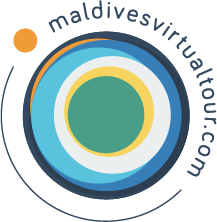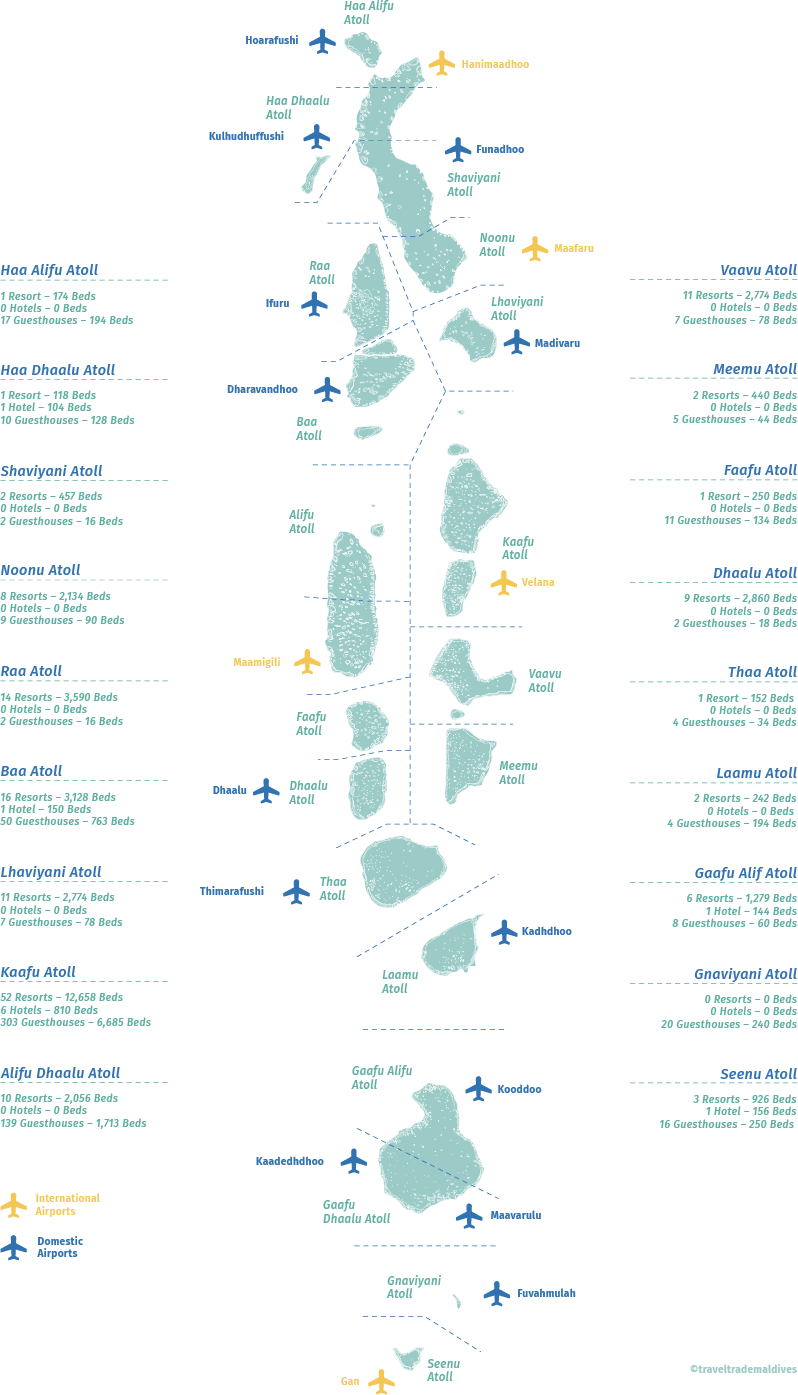Geography
The Maldives lies in two rows of atolls in the Indian Ocean, just across the equator. The archipelago is made up of 1,192 coral islands formed around 26 natural ring-like atolls, spread over 90,000 square kilometers. These atoll structures are formed upon a sharp ridge rising from the ocean, thereby fascinating visitors with its unique geography.
The reefs of the Maldives form bands of color, its islands like pearls scattered across the ocean, bounded by pearly soft sand and surrounded by crystalline azure water. Inhabitants of the islands are widely dispersed across the atolls, with about 200 inhabited islands. The rest are either developed as tourist resorts, uninhabited, or used for agriculture and other livelihood purposes. Male’ the capital city, lies to the north of the center of the atoll chain and is heavily populated with about 230,000 people.
The nearest neighbors to the Maldives are India, 600km distant to the north, and Sri Lanka, 670km to the east.
Climate
The Maldives experiences a humid, tropical climate with warm weather year-round. It has two distinct seasons — the southwest monsoon (wet season) normally extends from mid-May to November, while the northeast monsoon (dry season) extends from January to March. The month of December and April are considered as the monsoon transitional periods.
Temperature is moderated by the presence of vast sea and oceans surrounding the small islands, sitting at highs of 30℃ and lows of 25℃. Between February and May, however, temperatures do rise slightly, especially in the northern atolls.
Culture
Blessed with a rich culture dating back to the time of the first settlers, Maldives is survived by many traditional garbs, garments and rituals that can be witnessed even today as part of heritage practices.
One of the most prominent of these practices would be Boduberu (Big Drum), an ancestral tradition of song and dance similar to those found in east and south west Africa. Its core values have since undergone significant changes as the practice transitioned to modern times, according to the relevance of the era. Today, Boduberu is an important aspect of entertainment at stage shows, celebrations and festivals.
Maldives is also renowned for having expert craftsmen, who create unique and purely Maldivian handicrafts and souvenirs. The practice of lacquer work, for example, normally involves wood being spun at excessive speeds on handmade motor-like equipment. Sharp edged knives are used to precisely ink in and carve out designs and patterns on them.
Anyone who wishes to get an idea of the ancient Maldivian civilization and culture can visit the National Museum situated in the capital city Male'.
Before you Travel
COVID-19 Regulations
- All arriving and departing passengers via airports and seaports are required to complete the Imuga Traveler Declaration form within 96 hours to the flight time.
- PCR result is not mandatory during arrival and departure. This applies to unvaccinated travelers as well.
- Travel-related quarantine is not required by any traveler. However, except the arriving tourists and Maldivians (residing in the Maldives) to the Maldives, other travelers are advised to do a PCR test between the 3rd and 5th day of arrival.
Travel Trivia
- Language: Dhivehi is the official language of the Maldives.
- Timezone: UTC +05:00. There is no daylight saving.
- Currency: The currency of the Maldives is called Maldivian Rufiyaa. The fixed exchange rate is USD 1 = MVR 15.42.
- Holidays: Every Friday is observed as a holiday in the Maldives. Therefore, the weekend is from Friday to Saturday.
- The voltage in the Maldives is 220/230 V alternating current. As plugs with 3 poles are usually used, you should consider bringing an adapter.
Commonly Used Phrases
- Hello = Assalaam Alaikum
- How are you? = Haalu kihineh?
- Good = Rangalhu
- Yes = Aan
- No = Noon
- Thank you = Shukuriyaa


